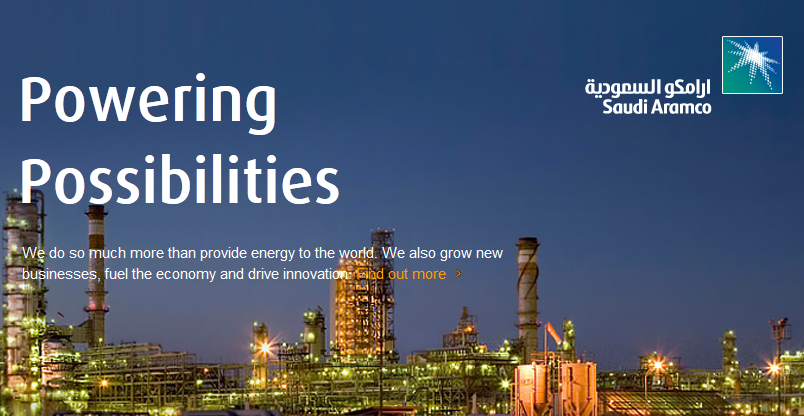Know About the World Biggest Oil and Gas production company- Saudi Aramco

In 1944, Saudi Arabia and four American oil producers jointly founded what they called Aramco, short for Arabian-American Oil Co. Earlier, the business had been called California-Arabian Standard Oil Co.
In 1980, the Saudi government nationalized it and changed its name first to Aramco and eight years later to Saudi Aramco. Today, the company is headquartered in Dhahran in the country’s eastern province, where Khalid A. Al-Falih serves as its corporate executive officer. Its more than 54,000 employees are producing and selling oil and gas for annually over $365 billion.
At present, Saudi Aramco produces annually four times more than ExxonMobil, its closest competitor. Saudi sources claim that by 2011 the company was controlling another 35 billion to 36 billion tons of oil and gas reserves and was then the world’s largest producer of both. Its sales contributed a large portion of Saudi Arabia’s state income. Estimating that Aramco’s facilities were worth more than $10 billion at the time, the British Financial Times described it as “the world’s most valuable business.”
Aramco’s Ghawar oil field in Arabia’s eastern province is by far the world’s largest. Discovered in 1948, its operation began in 1948 and reached its peak in 1981 with 5.7 million barrels a day, the highest rate of sustained petroleum production ever achieved at any oil field. Saudi sources assume that the Ghawar field has now reached its peak output since its annual yield has been declining by some eight percent.
In 2008, Aramco announced that it was divesting itself of a quarter of its Rabigh Refining business and was going to operate it jointly with Japan’s Sumitomo Chemicals. In the long run, the Saudis would rather sell less oil and gas to foreign users but use it in chemical production facilities of their own. To that end, in 2011 Aramco bought a 35 percent share of Dow Chemical and since then has jointly operated the newly founded Sadara Chemical Co. with Americans at the harbor of al-Dschubail. In this area’s industrial complex, facilities are presently being built for the production of basic chemicals at an investment of $12 million. This development, which is scheduled for completion in 2016, is to have the world’s largest capabilities for the electrolysis of chlorine and ammonium in the Haber-Bosch process, as developed by Thyssen-Krupp of Germany.
Since 2013, Dow Chemical has also been participating in the production of butanol, which is primarily used as a solvent and fuel.
Saudi King Abdullah repeatedly urged his country’s industrialists to expand the industries that use oil and gas. To this end, Saudi Aramco is in the process of building five new refineries—two in Yanbu and one each in Jizan, Rabigh, and Ras Tanura — that are to be in full operation before 2018. About $7 billion is being invested in the huge refinery in Jizan, a vital project for the industrialization of Saudi Arabia’s southwestern region. After its completion next year, it is to produce mainly gasoline, fiesel fuel with low sulphur content, benzene, and paraxylene. (Benzene is a colorless and highly flammable liquid and natural ingredient of crude oil and paraxylene is primarily used to manufacture polyester polymers for fibers and films.)
Saudi Aramco is in the process of becoming one of the world’s strongest competitors in the petrochemicals market. By 2020, the company plans to do have an international presence with its own Saudi Basic Business Corp. and 26 different petrochemical facilities, particularly for the production of synthetic materials.
To pursue this ambition, already in 2012 the Saudi Aramco Asia Co. opened up headquarters in Beijing, China, and offices in Korea.